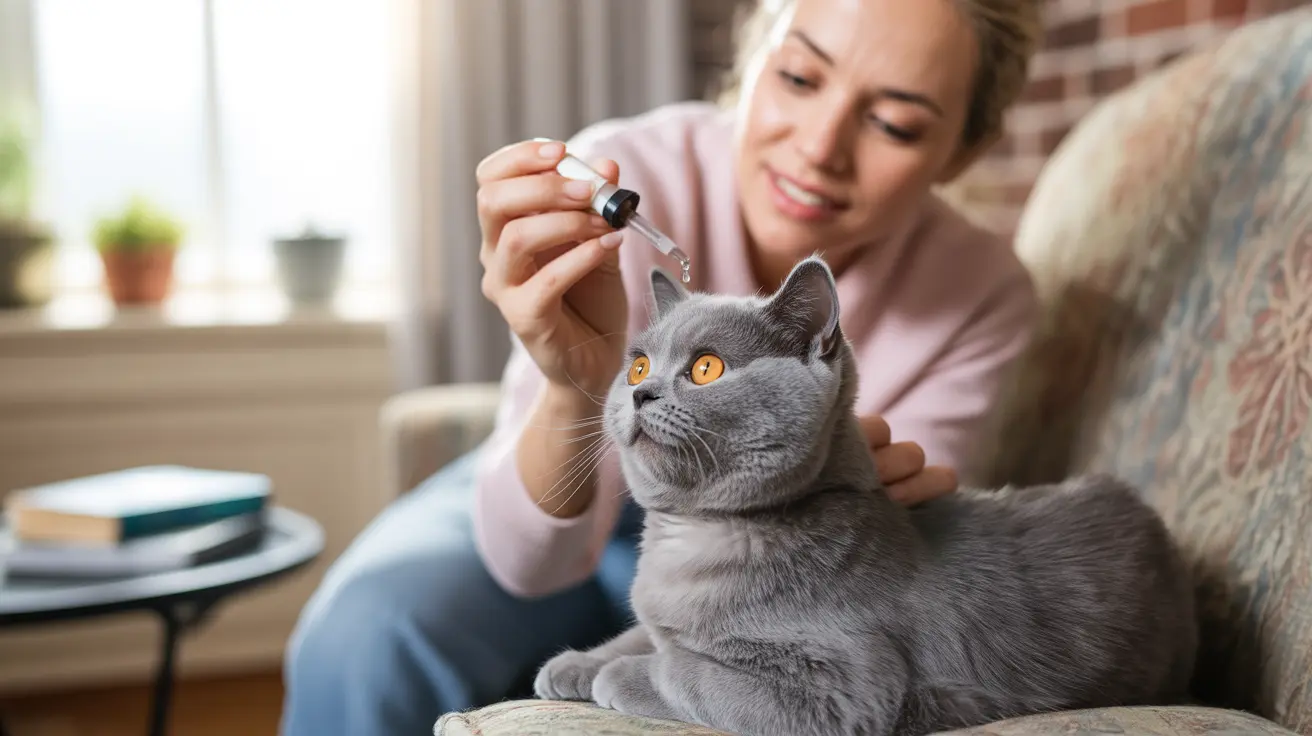When it comes to maintaining your cat's eye health, choosing the right eye drops is crucial. Whether dealing with minor irritations or managing chronic conditions, understanding the various types of cat eye drops available and their specific uses can make a significant difference in your pet's ocular health and comfort.
In this comprehensive guide, we'll explore everything you need to know about cat eye drops, from over-the-counter options to prescription medications, helping you make informed decisions about your feline friend's eye care needs.
Understanding Different Types of Cat Eye Drops
Cat eye drops generally fall into several distinct categories, each serving specific purposes in treating various eye conditions:
Lubricating Drops
These basic eye drops provide moisture and relief for mild irritation and dry eyes. They're generally safe for regular use and don't require a prescription. Popular options include Optixcare Eye Health and Dr. Goodpet Eye-C.
Antibiotic Eye Drops
Prescription-only drops containing antibiotics like Terramycin or Tobramycin treat bacterial infections such as conjunctivitis and corneal ulcers. These should only be used under veterinary supervision.
Anti-inflammatory Drops
These medications help reduce swelling and discomfort in infected or injured eyes. They often contain NSAIDs and require a prescription due to their potent nature.
When to Use Eye Drops for Your Cat
Different eye conditions require specific treatments:
Common Eye Problems
- Conjunctivitis (pink eye)
- Dry eye syndrome
- Corneal ulcers
- Allergic reactions
- Tear staining
- General irritation
Emergency Situations
Seek immediate veterinary care if you notice:
- Severe redness or swelling
- Cloudy appearance
- Excessive discharge
- Squinting or visible pain
- Changes in eye color or size
Proper Application Techniques
Administering eye drops to cats requires patience and proper technique:
- Clean your hands thoroughly
- Gently restrain your cat in a comfortable position
- Hold the eye open without applying pressure
- Apply drops from a safe distance to avoid touching the eye
- Allow your cat to blink to distribute the medication
Safety Considerations and Best Practices
To ensure safe and effective treatment:
- Never use human eye drops on cats
- Store medications properly according to instructions
- Check expiration dates regularly
- Keep applicator tips clean and avoid contamination
- Monitor your cat for adverse reactions
- Follow prescribed dosing schedules exactly
Frequently Asked Questions
What are the best types of eye drops for treating different cat eye problems like conjunctivitis or dry eye?
For conjunctivitis, prescription antibiotic drops are typically most effective. Dry eye is best treated with lubricating drops like Optixcare or BioHAnce. Always consult your veterinarian for specific recommendations based on the condition.
How do I safely apply eye drops to my cat and avoid causing irritation or infection?
Wash your hands thoroughly, gently secure your cat, and apply drops without touching the eye or bottle tip to the eye surface. Work quickly but calmly, and reward your cat afterward to create positive associations.
Can I buy effective cat eye drops over the counter, or do I need a veterinarian's prescription?
While lubricating drops are available over the counter, most effective treatments for infections or serious conditions require a prescription. Always consult your vet before starting any eye treatment.
What are the common side effects of cat eye drops and when should I contact a vet?
Common side effects may include temporary stinging or mild irritation. Contact your vet immediately if you notice increased redness, swelling, discharge, or if symptoms worsen after treatment.
Which cat eye drops are recommended for chronic dry eye or tear staining issues?
For chronic dry eye, veterinarians often recommend products containing hyaluronic acid like Sentrx Eye Lube Pro. For tear staining, specific products like Vet Classics Tear Stain Soft Chews can help manage the condition while addressing underlying causes.
Remember, while eye drops can be an effective treatment for many feline eye conditions, proper diagnosis and professional guidance are essential for ensuring your cat receives the most appropriate care for their specific situation.






